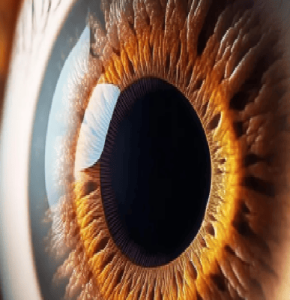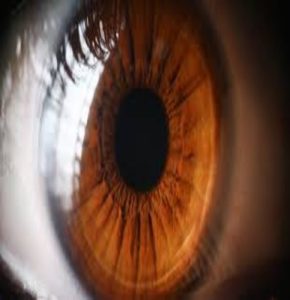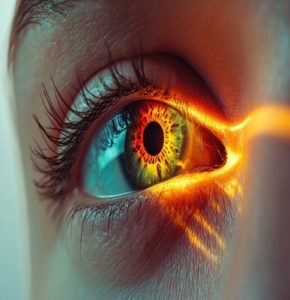The cornea is the clear, dome-shaped outermost layer of the eye that covers the iris, pupil, and anterior chamber, acting as a protective barrier. Composed of layers of cells and nerves, it contributes to the eye’s sensitivity. The cornea is responsible for about two-thirds of the focusing power; thus, irregularities in it can significantly affect vision clarity and quality.
Description:
Pterygium is a non-cancerous growth of tissue on the conjunctiva, the thin membrane that covers the white part of the eye. It often appears as a raised, wedge-shaped bump and can cause irritation, redness, and discomfort.
What to expect from Pterygium Treatment?:
Treatment for pterygium depends on the severity of symptoms. Mild cases may be managed with lubricating eye drops or ointments to relieve discomfort. In more severe cases, surgical removal of the pterygium may be necessary to alleviate symptoms and prevent vision loss.
Benefits:
Surgical removal of a pterygium can help reduce irritation, redness, and discomfort. It also prevents the growth from spreading further onto the cornea, which impacts vision.
- Prevention of vision obstruction
- Relief from discomfort
- Cosmetic improvement
- Reduced risk of recurrence
- Improved appearance of the eye
Duration:
The duration of pterygium surgery varies depending on the size and severity of the growth. The procedure typically takes less than an hour and is performed on an outpatient basis under local anaesthesia. Recovery time varies, but most patients can resume normal activities within a few days to weeks after surgery.
Description:
C3R is a procedure used to strengthen the cornea and halt the progression of keratoconus, a condition characterised by the thinning and bulging of the cornea. It involves applying riboflavin (vitamin B2) eye drops to the cornea, followed by exposure to ultraviolet (UV) light.
What to expect from C3R Treatment?:
During C3R treatment, the patient lies down while riboflavin drops are applied to the cornea, which is then exposed to UV light. This process strengthens the collagen fibres within the cornea, increasing its structural integrity.
Benefits:
C3R can help stabilise or slow the progression of keratoconus, preventing further deterioration of vision and potentially reducing the need for more invasive treatments such as corneal transplantation.
- Halt progression of keratoconus
- Reduced need for corneal transplantation
- Long-term preservation of vision
- Minimised risk of severe visual impairment
- Strengthening of the corneal tissue
Duration:
The C3R procedure typically takes about an hour to complete. Patients may experience some discomfort or light sensitivity following the procedure, but this usually resolves within a few days.
Description:
DSEK is a type of corneal transplant surgery used to treat corneal endothelial dysfunction, where the endothelial cells on the inner layer of the cornea do not function properly. This can lead to corneal swelling and blurred vision.
What to expect from DSEK Treatment?:
During DSEK surgery, the diseased endothelial layer of the cornea is replaced with a thin layer of donor tissue containing healthy endothelial cells. The new tissue is positioned and held with an air bubble until it adheres to the cornea.
Benefits:
DSEK offers several advantages over traditional full-thickness corneal transplantation, including faster visual recovery, reduced risk of complications such as astigmatism, and a lower risk of graft rejection
- Rapid visual recovery
- Minimal risk of rejection
- Improved visual outcomes
- Reduced astigmatism
- Enhanced corneal clarity
Duration:
The DSEK procedure typically takes 1 to 2 hours to complete. Recovery time varies, but many patients experience improved vision within a few weeks to months after surgery.
Description:
DALK is another type of corneal transplant surgery used to treat conditions affecting the cornea’s outer layers, such as keratoconus or corneal scarring. Unlike DSEK, DALK preserves the patient’s endothelial layer.
What to expect from DALK Treatment?:
During DSEK surgery, the diseased endothelial layer of the cornea is replaced with a thin layer of donor tissue containing healthy endothelial cells. The new tissue is positioned and held with an air bubble until it adheres to the cornea.
Benefits:
DALK can improve vision and corneal clarity in patients with conditions affecting the cornea’s outer layers while preserving the patient’s endothelium. It offers a lower risk of rejection compared to full-thickness corneal transplantation.
- Preservation of the patient’s endothelial layer
- Reduced risk of graft rejection
- Enhanced visual outcomes
- Improved corneal shape and stability
- Minimally invasive procedure
Duration:
The DALK procedure typically takes 1 to 2 hours to complete. Recovery time varies, but many patients experience improved vision within a few weeks to months after surgery.
Description:
Intacs are small, clear plastic inserts that are surgically placed within the cornea to reshape it and correct mild to moderate nearsightedness or keratoconus. They help flatten the cornea, improving vision.
What to expect from Intacs Treatment?:
During Intacs placement, a small incision is made in the cornea, and the Intacs inserts are placed within the corneal stroma to reshape it. The procedure is typically quick and performed on an outpatient basis.
Benefits:
Intacs can improve vision and reduce dependence on glasses or contact lenses in patients with mild to moderate nearsightedness or keratoconus. They offer a reversible alternative to more invasive corneal surgery.
- Corrects refractive errors
- Reversibility
- Minimally invasive procedure
- Quick recovery
- Improved contact lens tolerance
Duration:
The Intacs placement procedure typically takes about 30 minutes to complete. Recovery time is relatively quick, with many patients experiencing improved vision within a few days to weeks after surgery.
Description:
Keratoconus is a progressive eye condition characterised by thinning and bulging of the cornea, resulting in distorted vision. It typically begins during adolescence or early adulthood and can worsen over time.
What to expect from Keratoconus Treatment:?:
Treatment for keratoconus depends on the severity of the condition. Mild cases may be managed with eyeglasses or contact lenses to correct vision. In more advanced cases, surgical interventions such as corneal collagen cross-linking (CXL), Intacs placement, or corneal transplantation may be necessary to stabilise or improve vision.
Benefits:
Treatment for keratoconus aims to stabilise the cornea and improve visual acuity. Early intervention can prevent further progression of the condition and may reduce the need for more invasive treatments in the future.
- Improved vision
- Halt progression of keratoconus
- Enhanced contact lens tolerance
- Preservation of vision
- Reduced risk of severe visual impairment










